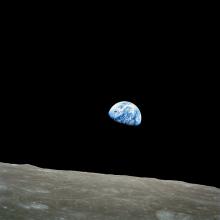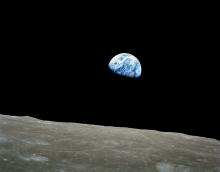Listen to today's episode of StarDate on the web the same day it airs in high-quality streaming audio without any extra ads or announcements. Choose a $8 one-month pass, or listen every day for a year for just $30.
You are here
More Venus and Jupiter
If you have a few minutes after sunset, it’s well worth stepping outside and peeking at the western sky. That’s the site of a spectacular encounter between Venus and Jupiter, the brightest objects in the night sky after the Moon. They stand side by side, separated by about the width of the Moon. Venus is the brighter of the two.
The planets are quite different. Venus is a ball of rock and metal only a little smaller and less massive than Earth. Jupiter is a ball of gas that’s much bigger and heavier than Earth. Yet both worlds have an effect on our own — a cycle in Earth’s orbit caused by a gravitational tug of war between Venus and Jupiter.
Jupiter is the most massive planet in the solar system, but Venus passes much closer to us. So when you work it all out, they both produce a pretty good tug on our planet. That changes the shape of Earth’s orbit.
Right now, the orbit is pretty close to circular, so our distance to the Sun varies by only about one and a half million miles in either direction. But over a period of about 400,000 years, the pull of Jupiter and Venus makes the orbit more lopsided. That causes the distance to the Sun to vary by about five million miles. That greater range produces a more significant difference in temperatures. And that creates big changes in climate — thanks to the pull of two planets that are staging a beautiful encounter in the evening sky.
Script by Damond Benningfield






